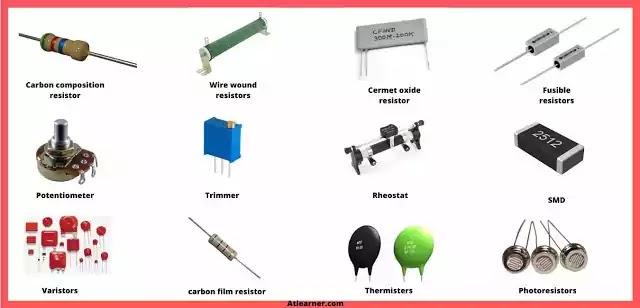
Resistors are among the most prominent electronic parts around due to the fact that they're basic yet functional. Among the most common uses a resistor is to restrict the amount of present partly of a circuit. Nevertheless, resistors can additionally be used to control the amount of voltage offered to part of a circuit and also to assist create timing circuits.Limiting present
The circuit in the following figure reveals a 6-volt battery supplying present to a light-emitting diode (LED) through a resistor (revealed as a zigzag). LEDs (like many other digital components) eat up present like a child eats candy: They attempt to gobble up as much as you provide. Yet LEDs run into an issue-- they melt themselves out if they attract too much current. The resistor in the circuit serves the beneficial feature of limiting the amount of present sent out to the LED (the means a good parent restricts the intake of sweet).
The resistor restricts the quantity of existing, I, flowing into sensitive elements, such as the" width=" 535 ″/ >
Too much current can destroy numerous delicate electronic elements-- such as transistors as well as incorporated circuits. By placing a resistor at the input to a delicate component, you restrict the present that reaches the component. (Yet if you use too expensive a resistance, you'll restrict the existing so much you won't see the light, although it's there!) This straightforward technique can save you a lot of money and time that you would certainly or else shed fixing unintentional blow-ups of your circuits.

You can observe exactly how resistors restrict present by establishing the circuit revealed as well as experimenting with resistors of various worths.
Below's what you make use of to construct the LED-resistor circuit:
( recognized by yellow-violet-brown red stripes and afterwards a fourth stripe which may be gold, silver, black, brown, or red).
alligator clips or a solderless breadboard to set up the circuit (see the adhering to number), beginning with the 470 resistor. Keep in mind to orient the LED properly, connecting the much shorter lead of the BROUGHT ABOUT the adverse battery terminal. Don't stress over the orientation of the resistor; either way is great. Note how vibrantly the LED radiates. Then get rid of the resistor as well as change it with the other resistors, one at a time, raising the amount of resistance each time. Did you notice that the LED radiates less brilliantly each time? That's because higher resistances restrict existing a lot more, and the much less existing an LED gets, the much less brightly it beams.
Two methods to establish the resistor-LED circuit.
The complying with number shows a parallel circuit in which each branch has a different value of resistance. For greater worths of resistance, the current that travels through that branch is limited much more, so the LED in that branch releases much less light.
Higher values of resistance restrict existing extra, resulting in less light discharged from the LEDs.
Greater worths of resistance restrict current much more, leading to much less light resistors sent out from the LEDs.
Reducing voltage Resistors can be used likewise to minimize the voltage provided to different parts of a circuit. State, for example, you have a 9-volt power supply however you need to offer 5 volts to power a specific integrated circuit you're using. You can set up a circuit, such as the one revealed below, to separate the voltage in such a way that supplies 5 V at the outcome. Then-- voilà-- you can use the result voltage, Vout, of this voltage divider panel as the supply voltage for your incorporated circuit.
Use 2 resistors to produce a voltage divider panel, a typical method for creating various voltages.
Use 2 resistors to develop a voltage divider panel, an usual strategy for generating various voltages for various parts of a circuit.
Next off, utilize your multimeter set to volts DC to gauge the voltage throughout the battery and also throughout the 15.
as revealed. Measurements show that the actual battery voltage is 9.24 V and Vout is 5.15 V.
Measure the total voltage supplied by the battery (left) and also the voltage throughout the resistor (right.
Action the complete voltage provided by the battery (left) as well as the voltage across the resistor (right).
Controlling timing cycles.
You can additionally place a resistor to collaborate with an additional prominent element-- a capacitor-- to create predictable backwards and forwards voltage swings. You'll locate the resistor-capacitor combo helps you create a sort of shapely timer, which is available in useful for circuits that have time dependencies (as an example, a three-way traffic control).
